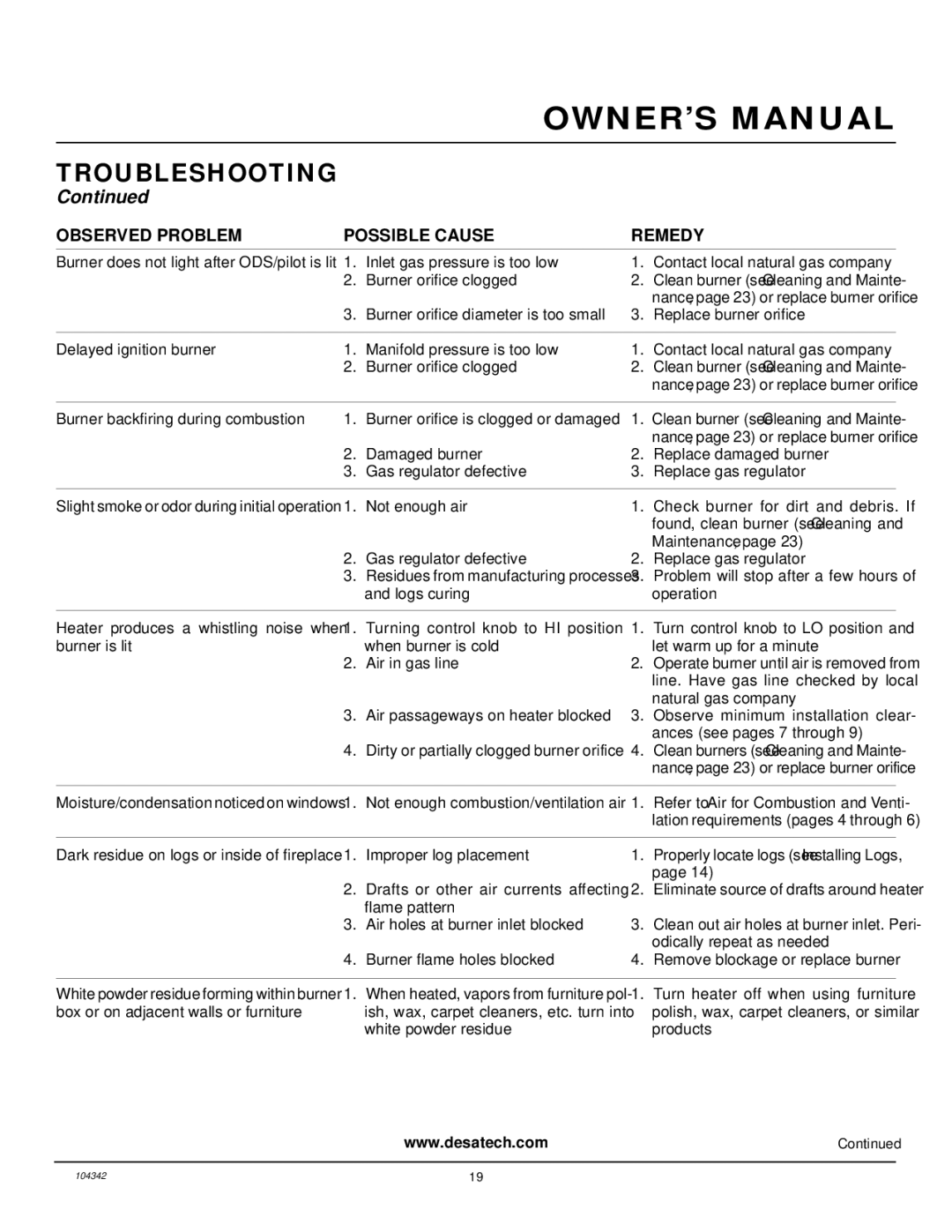GAS LOG HEATER specifications
Desa GAS LOG HEATER is a popular heating solution that brings the warmth and ambiance of a traditional fireplace to modern living spaces. Renowned for its efficiency and aesthetic appeal, this gas log heater is designed to replicate the flickering flames and the cozy feel of a wood-burning fire without the associated hassles.One of the primary features of the Desa GAS LOG HEATER is its realistic flame effect, which is created using advanced gas log technology. The heater utilizes artificial logs that are crafted to resemble real wood, enhancing the visual appeal and creating a nostalgic atmosphere. The flames are adjustable, allowing users to customize the intensity based on their preferences and heating needs.
Efficiency is a hallmark of the Desa GAS LOG HEATER. Equipped with a high-efficiency heating system, it effectively converts gas to heat, ensuring that energy consumption is kept to a minimum. This results in lower utility bills and a reduced carbon footprint, making it an environmentally friendly option for homeowners. The heater's BTU output can vary, allowing it to accommodate different room sizes and layouts.
The Desa GAS LOG HEATER also features easy ignition systems, which simplify the startup process. Many models come with an automatic ignition option or a push-button start, eliminating the need for matches or lighter. Furthermore, they often include adjustable heat settings, enabling users to control the temperature easily.
Safety is a critical concern with gas heaters, and Desa addresses this with built-in safety features. These may include safety shut-off valves, thermocouple sensors, and automatic shut-off systems that activate in case of malfunction or if the heater tips over. This provides peace of mind for families with children or pets.
Installation of the Desa GAS LOG HEATER is generally straightforward, especially compared to traditional wood-burning fireplaces. Many units can be vented directly through an exterior wall, reducing the need for extensive chimney systems. This versatility allows homeowners to place the heater in various locations, enhancing the overall design of their spaces.
In summary, the Desa GAS LOG HEATER combines style, efficiency, and safety to deliver a reliable heating solution. Its realistic flames and efficient operation make it an attractive choice for anyone seeking to enjoy the charm of a fireplace without the complexities of wood burning. As energy efficiency and environmental consciousness continue to rise, the Desa GAS LOG HEATER stands out as a smart option for modern homes.

